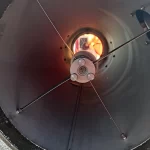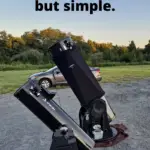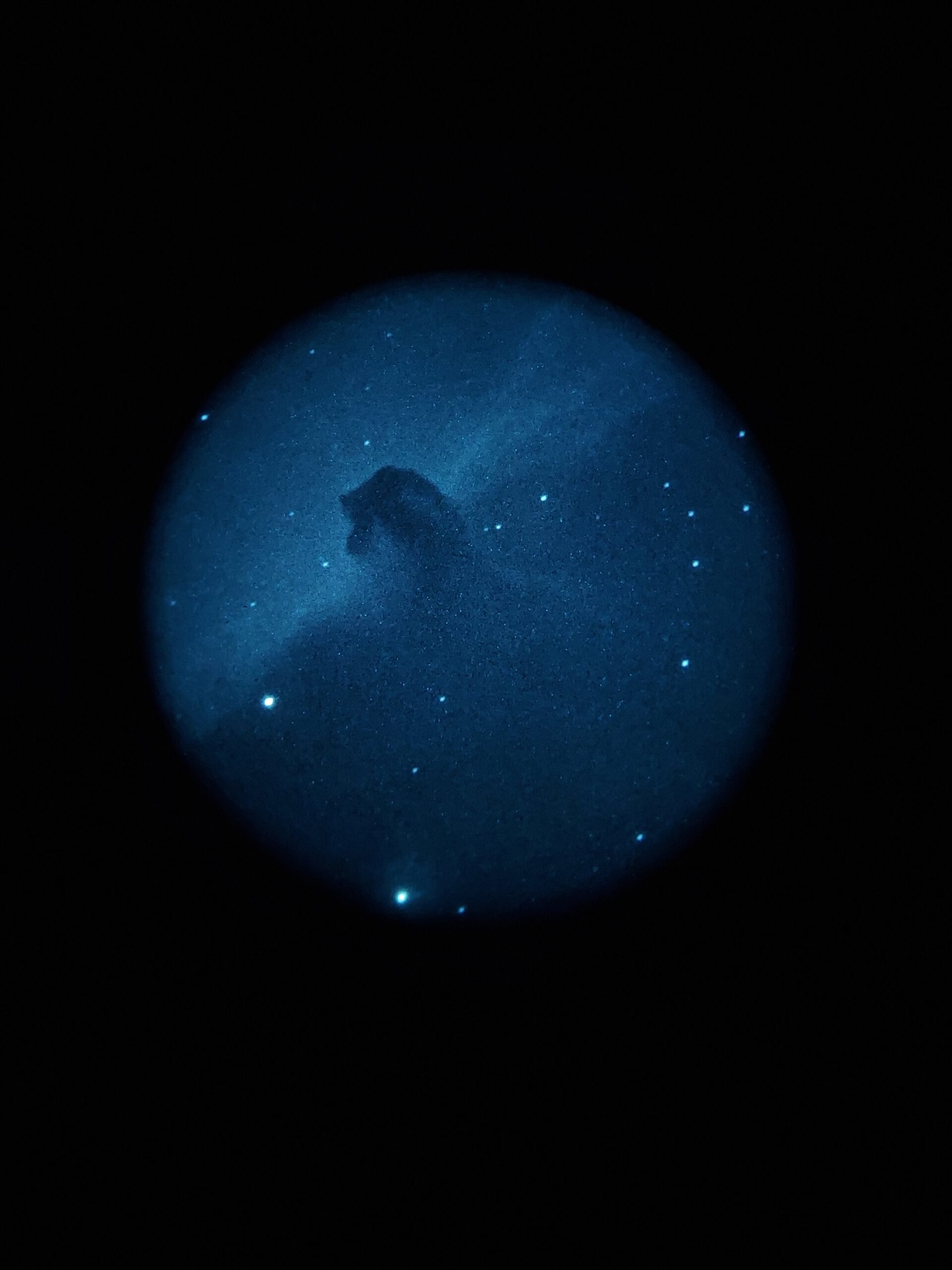Expectations are a really important part of astronomy. Stars are beautiful and mysterious and you can see quite far into space with a telescope.
Stars look the same through a telescope, but brighter. Stars will look like bright dots of light with no color in most cases. There are some especially bright stars that will show blue, yellow, red or green through a telescope. Color is visible when the light is bright enough to your eyes.
When you are in perfect focus the stars should look like pinpoints of light. They do not look like disks or balls, just like perfect pricks in the dark sky.
The colorful NASA images of stars and galaxies are taken with a long exposure photograph. Our eyes can only see color when we have enough light, in dim conditions we only see black and white. Long exposure photos collect light over time and layer it together to reveal the colors produced by the stars, nebulae, galaxies, and planets.
The photos in this article were taken by Mike Ducak with a long exposure camera, I have also included a few handheld cell phone pictures I took.
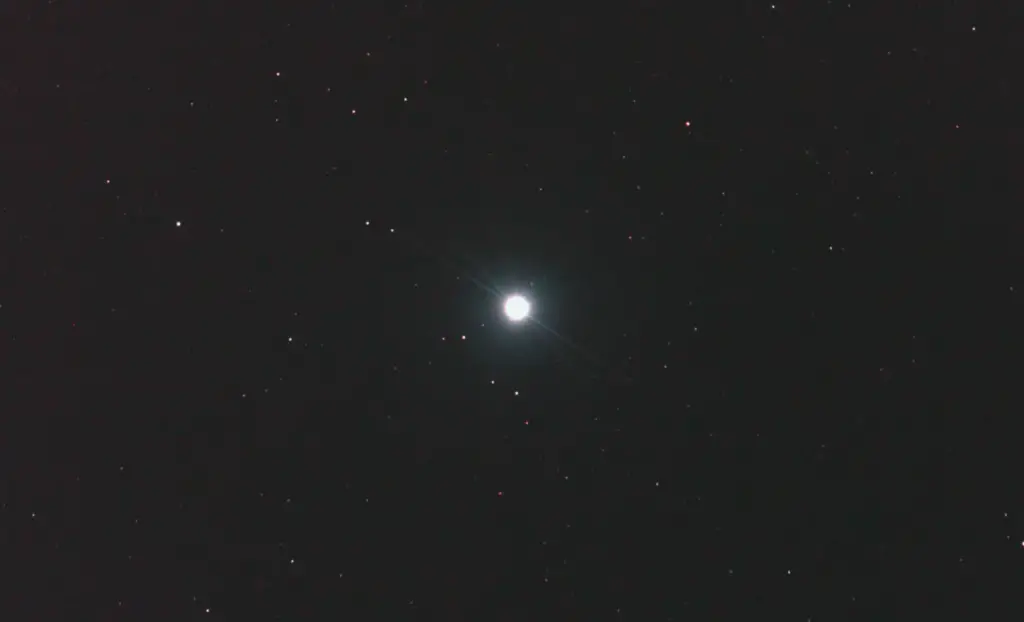
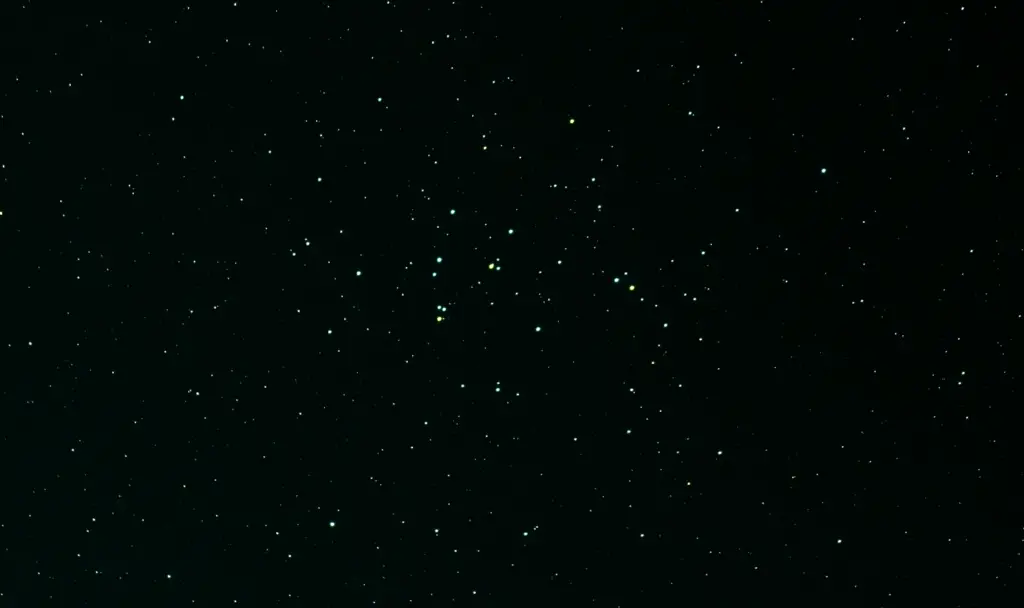
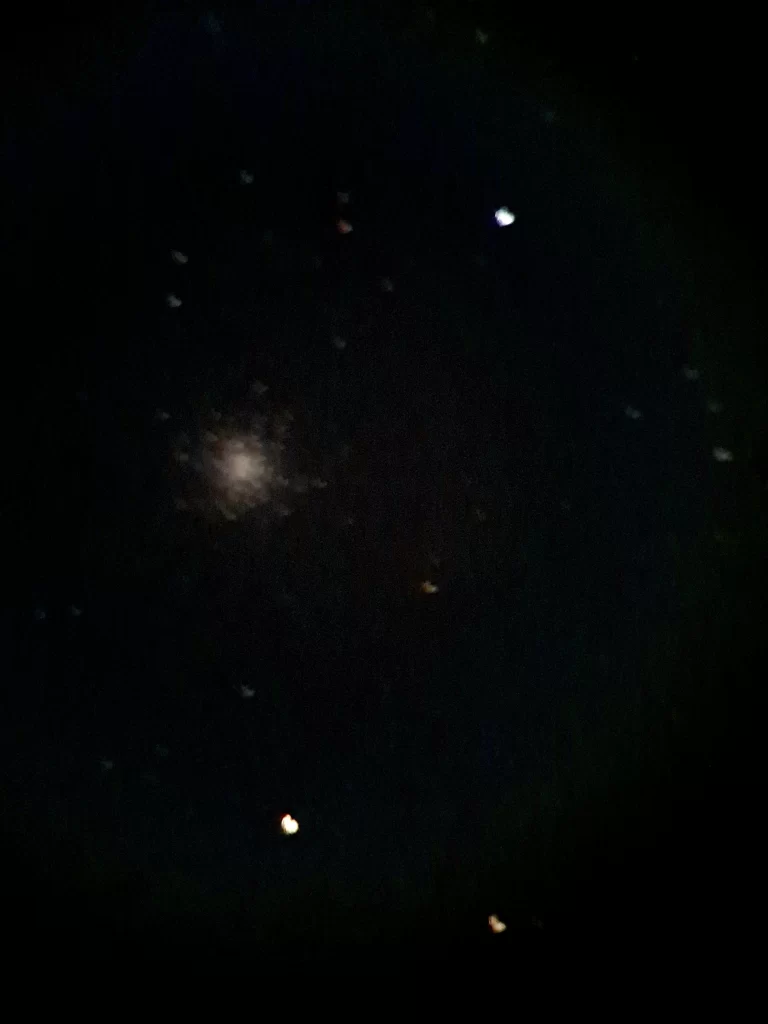
Coma
You may notice some stars appearing to be more oval or to appear to have a tail like a comet, this is a result of coma.
Coma is a distortion of objects viewed through a telescope. Coma is the result of variations in magnification that are almost inevitable in even the highest quality, perfectly collimated telescope.
Coma makes stars look oblong or looks like they have a tail like a comet. This can be corrected with a coma corrector. Coma correctors will allow you to see stars as more pinpoint, but that is a matter of preference. If you are unbothered by coma, you do not need to correct the distortion.
All telescopes can have some degree of coma, but it is most evident in Newtonian scopes with low focal ratios, especially below f/6. Low focal ratios are also called fast telescopes.
You can check the coma on your scope by putting a very bright star in the center of a medium power eyepiece. That is the most crisp your scope is able to see a star. Move the star to the edge of the field of view and notice the distortion, with coma correctors your stars can all look like the centered star. This can help you decide if you want to purchase a coma corrector.
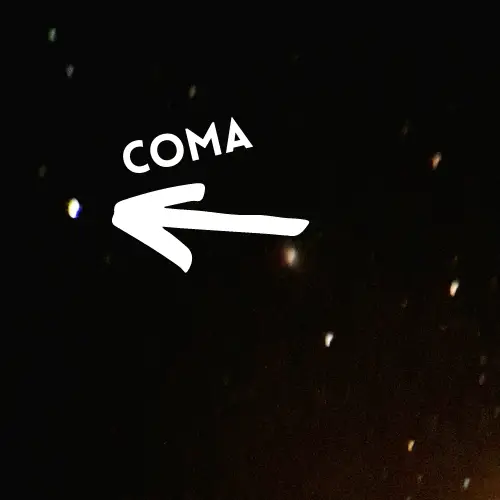
Diffraction Spikes
You may notice lines coming from the center of the star, you may observe what are called sunburst stars, stars with many rays coming from them. These spikes are called diffraction spikes and they are only present when using a reflector telescope.
The shape of the stars that you see through your telescope are impacted by the shape and position of your spider vanes.
Spider vanes are the supports inside your optical tube that hold the secondary mirror in place. Different positions, shapes and number of spider vanes will give the star a different shape. Celestron has a lot of examples of what to expect in this article.
Diffraction spikes can be used to achieve precise focus, you should see the sharp long diffraction spikes. This is only true for very bright stars on very clear nights.
Diffraction spikes do not exist on stars, they are a result of the telescopes we use to observe them.
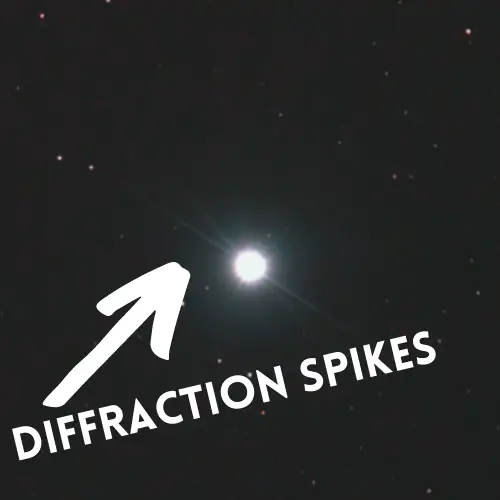
Filters
Filters are added to your eyepieces and they filter out certain types of light. They can bring out details that you would not see otherwise.
A few nights I put on a UHC filter and scanned the Milky Way. I saw nebulas that were invisible to me without the filter.
Since stars are some of the dimmest objects you will observe you will likely not use filters unless you are observing a double star.
Stars vs. Planets Through a Telescope
Planets are brighter because they are closer to Earth and they are reflecting light from our Sun back to Earth.
Planets will look like balls or disks through a telescope, while you will not be able to discern any shapes in stars. Stars are bright dots through your telescope. You can identify planets and stars with a sky map app like Star Safari. Learning the constellations will make identifying objects faster and easier.
When you are looking up into the sky you will notice some bright objects. The brightest objects are planets.
The brightest objects in the sky are:
- The Sun
- The Moon
- Venus
- Jupiter
- Mars
- Mercury
- Serius
- Canopus
Brightness of objects is measured in apparent magnitude. Humans can see objects as dim as 6.5 unaided. The apparent magnitude scale works backwards, the lower the number the brighter the object.
The apparent magnitude of the Moon is -12.74 and the apparent magnitude of the brightest visible star, Serius, is -1.48.
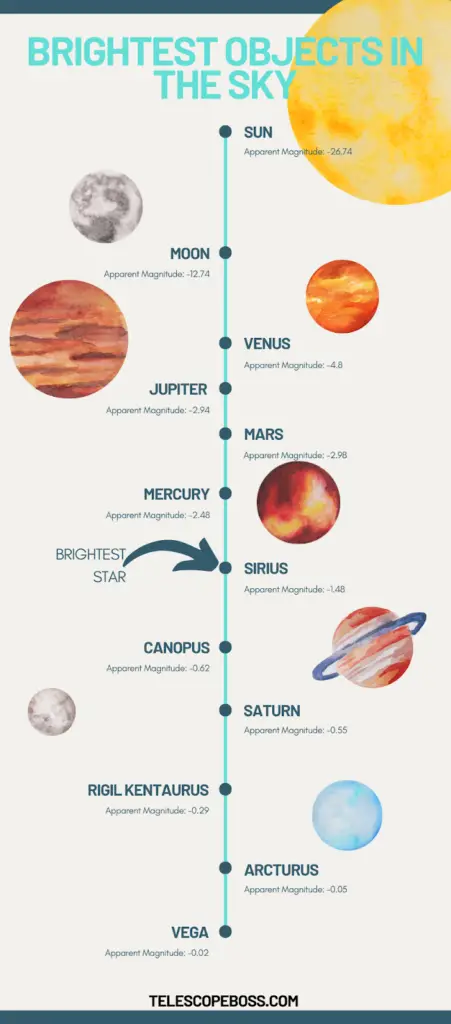
When you are scanning the sky, the brightest objects you will see are planets. Take out your scope or your binoculars and look at the brightest star you can find, does it look like a disk or like a pinpoint, check on a star map or app, but you are likely looking at a planet.
Venus rises and sets very close to the sun, so it is below the horizon for most of the night, so the bright star you are seeing is most likely Jupiter.
How to Find Stars with a Telescope
A famous astronomy story is about the Hubble Space Telescope, they pointed the telescope into an area of space with no particular target in mind and they were astounded to see billions of stars, thousands of galaxies and an amazing view of the universe in the photo it returned. The photo is called the Hubble Ultra Deep Field, and it can be found here.
Point your telescope to any area of the sky and you will be able to observe stars.
Start to learn the constellations, maybe you can identify Orion’s Belt, start there. If you look up and to the left there is the famous star Betelgeuse, it is very red and they expect it to go super nova soon.
Finding stars is easy with a telescope, but knowing what they are makes observing them much more exciting. Many astronomers work to complete a Messier Marathon. It is a list of 110 stars, nebulae, and galaxies and it is an incredible treasure hunt for amature astronomers.
Can you see stars through a telescope?
Stars are visible through a telescope, but you will not be able to discern any detail. It is possible to observe some color in very bright stars with the right equipment in clear conditions and amazing photographs of stars are possible for the backyard astronomer as well.
Double Stars
2 stars that look like one star because they are so close together are called double stars. These stars are easier to see because they are brighter. The brightness of double star clusters allows you to see more detail.
Some Doubles are very hard to find, they look like just another star with the unaided eye. When you center one in your eyepiece they can stand quite a bit of magnification. Use your highest magnification eyepiece.
These doubles will surely put on a show if you can find them.
Epsilon Lyrae
Also known as the Double Double, Epsilon is a collection of 4 stars, but it looks like one to the unaided eye. Start with low magnification to find the star close to Vega. As you increase magnification you will see two stars then four.
Albiero
Albiero is a double star with stunning color. I found it with my goto, it was on the tour with my SynScan. One star is blue and one is red. This is a really impressive target with your telescope.
Mizar
Mizar is on the list because it is easy to find. Located in the handle of the big dipper, Mizar has a huge magnitude difference. Seeing two stars with such a difference in brightness in the same eyepiece is really cool.

